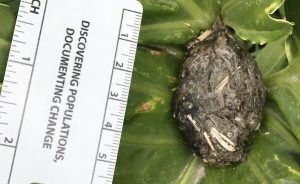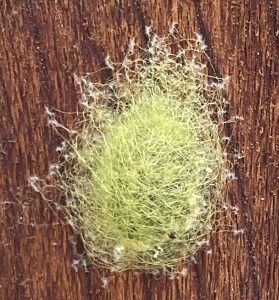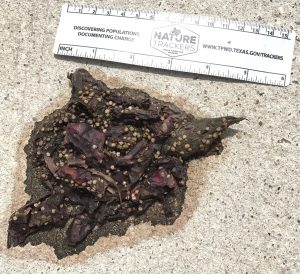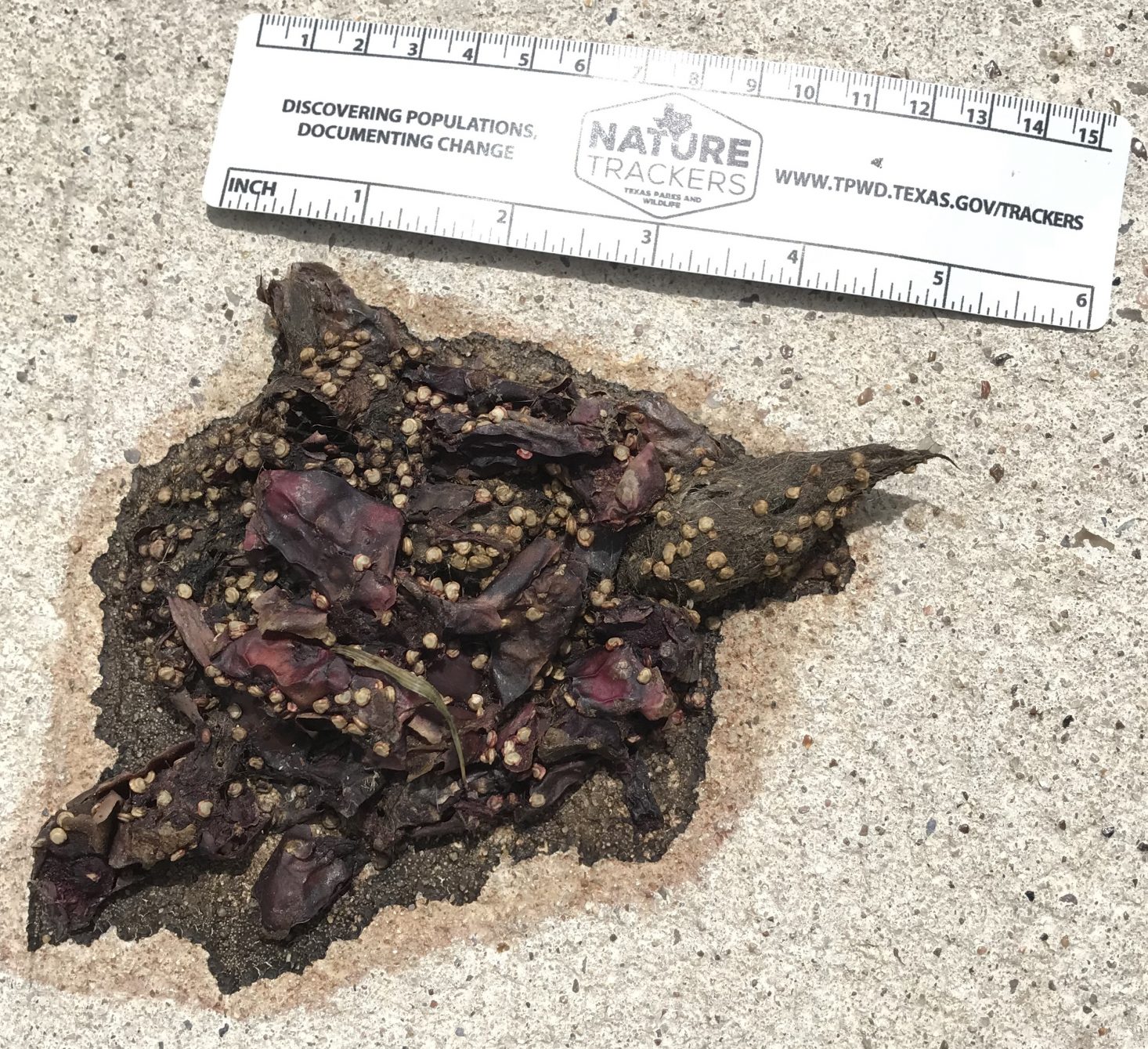You may have been following recent information about what photos to upload for the upcoming annual City Nature Challenge. Master Naturalists, Valley residents and Winter Texans alike are being encouraged to join the challenge and upload nature photographs to the www.iNaturalist.org website database to help document the diversity of the Valley’s habitat.
An interesting and acceptable category is one that is considered signs-of-life. These are the odd items — the mysterious-looking and not so easily recognized objects one might come across while scouring the land for all things native. These are signs that indicate something has passed through an area and left something behind, such as feathers, tufts of fur, roadkill (or something the cat has brought in), bones, skeletons, partial skeletons, snake skins, an empty or full chrysalis or cocoon, scat, tracks of birds and other critters, and things like castings, owl pellets, and turkey vulture regurgitation.

During the first City Nature Challenge the Lower Rio Grande Valley entered, I discovered and uploaded an oddity that I’d found on the grass under a stand of Washingtonia palms. It was an owl pellet. Owl pellets are indigestible materials from the birds’ prey, including feathers, teeth, fur, and some bones along with the owl’s digestive fluids. They are not scat, as they have not passed through the owl’s digestive system, but are regurgitated, or hacked up. Most adult owls will produce two pellets a day; they can be found underneath their favorite roosts.
Owl pellets can be a fascinating find, but experts put a healthy caution on them: before attempting to break them apart to see what all is in them, wear gloves, wrap each pellet in aluminum foil and place them in an oven set at 325 degrees Fahrenheit for 40 minutes to kill bacteria such as E. coli and other harmful things that might be present.
Such pellets are common to all birds of prey that swallow their food whole, including hawks and eagles. In falconry, it is called a casting. Other species that produce pellets include grebes, herons, cormorants, gulls, terns, kingfishers, crows, jays, swallows, and most shorebirds.
Some avian, such as Turkey Vultures have the ability to regurgitate undigested food as a defense when startled or harassed. Herons, gulls, terns and kestrels also rely on this type of defense.

Images of feathers can also be uploaded. I’ve had a Great Horned Owl, an Osprey and a Pauraque identified from a photo of feathers I’ve found in the yard. Last year, a photo of scat proved to be from a bobcat and this year, an intriguing substance on our driveway was identified as nine-banded armadillo scat.

Recently I uploaded a photo of an interesting green blob I found on the wood of my arbor. I chose the class name, Arachnids, as the species name since I suspected my find was of an egg sac for a spider. That category would capture the attention of expert spider identifiers. My observation was soon identified as a spinybacked orbweaver.
It’s helpful for the identifiers if a perspective is included in photographs of peculiar subjects so they can judge the size of an object to be identified. A six-inch ruler is a handy prop to place next to a specimen to show perspective.
Local identifiers offer advice for taking photographs for uploading onto iNaturalist.
Recommended photography pointers

- Keep a white card with you about 8 ½ by 11 inches. Place card behind plant species if plant is among a tight growth of vegetation. This will single out item to be identified. Or use a light colored hat as background.
- If guinea grass or other invasive vegetation obscures object you want to photograph, pull, push or trim invasive species before taking photograph.
- Ensure photos are sharp and crisply focused. Keep phone camera lens at least 6 inches from subject. Hold camera or phone completely still so camera shake doesn’t blur the end result. Take several photos and edit them later.
- Try to capture both bloom and leaf in photo. If there are mature fruits or seedpods on plant or beneath it, or thorns on trunks, capture those also; uploading multiple shots is allowed.
- If multiple photos are taken to ensure proper identification, upload all photos to one observation entry.
- Taking one photo of an entire shrub or tree shows growth form but not enough detail to make an ID.
- Take additional photos to show details of foliage, blooms, stem, and other features that will help identify a species from a photo.
- A white or light colored 6-inch ruler in the photo helps show scale. Or drop a coin near the subject, or your hand or foot. The object needs to be something that can give a relatively true perspective.
- Learn the editing features on your phone. On some phones, it’s easy to crop out irrelevant things, keeping only the object you wish to submit.
- You also can change the lighting using the phone’s editing features, which often helps to better visualize things.
- A wide-brimmed hat is handy to shade cellphone or camera screen to help show if shot is in focus.
- If there is too much light on white or yellow blooms, they will be obscured. Someone can hold an umbrella overhead or position their body to put the object in shade. It’s best to have the sun at your back, rather than taking a photo facing into the sun.


Leave a Reply